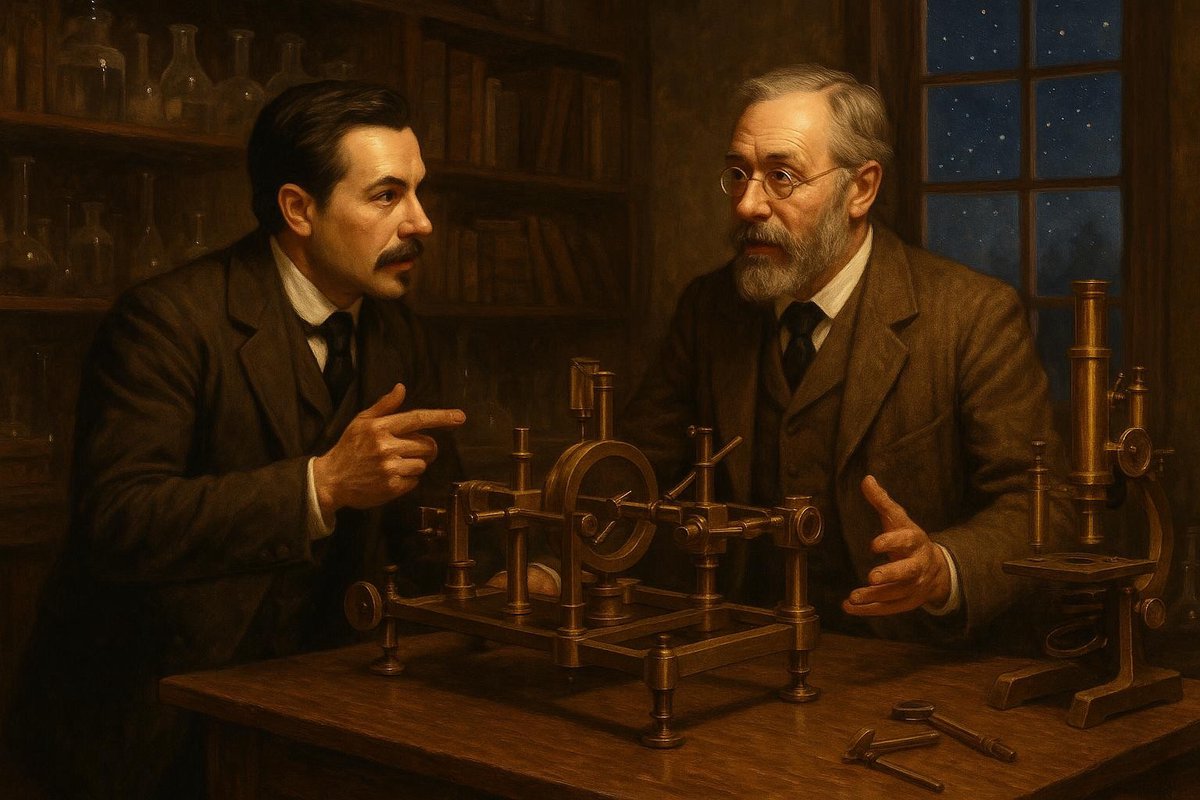
Unpacking the Question: Is There an Ether Wind?
What exactly is the ether wind, and why did 19th-century scientists chase it? Picture this: you’re standing in a gentle breeze, convinced the air is what’s essential for sound to travel. Now, imagine light working the same way. The ether was postulated as an invisible medium filling space, carrying light just as air carries sound. But was it real?
Before the Michelson-Morley Experiment, many scientists believed the ether was critical. The idea was firmly rooted in the works of James Clerk Maxwell, whose equations implied a medium for light waves. Yet, something was amiss. Despite its theoretical elegance, the ether lacked empirical evidence.
- Scientists attempted to measure Earth’s movement through the ether, expecting to find an ‘ether wind.’
- Michelson and Morley sought to detect changes in the speed of light as Earth moved through this ether.
- Their goal was simple yet profound: if ether existed, light’s speed should vary depending on Earth’s direction.
A straightforward question, or so it seemed. But what they unearthed would shake the very foundations of physics.
Surprising Facts: The Pursuit of the Unseen
The journey wasn’t straightforward. Michelson and Morley meticulously prepared, building a device of unparalleled precision for their time—the Michelson interferometer. This instrument, a marvel of engineering, was key to their quest. Despite their efforts, the results were unexpected.
Imagine spending months tuning a symphony, only to hear silence when the orchestra begins to play. That’s what they encountered—a null result. No ether wind. The implications were vast.
- The experiment took place in 1887, at what is now Case Western Reserve University in Cleveland, Ohio.
- Michelson, a meticulous physicist, was the first American to win a Nobel Prize in Physics, later awarded in 1907.
- Initially, many in the scientific community were puzzled or dismissive of the findings.
“The result of the experiment was negative,” Michelson wrote, with a hint of disbelief. But this ‘failure’ was, in fact, a revelation.
What Science Says: Shattering the Ether Illusion
So what did the Michelson-Morley Experiment really prove? In a twist of scientific irony, their null result became a beacon of progress. By failing to find the ether, they cleared the path for a new understanding of light and motion, later contributing to Einstein’s theory of relativity.
Think of it as searching for a hidden treasure only to discover a map leading to an entirely new world. The absence of ether suggested light’s speed is constant, regardless of the observer’s motion—a pillar of modern physics.
- This experiment disproved the ether theory, challenging centuries of scientific thought.
- It laid the groundwork for Einstein’s radical idea that space and time are intertwined.
- Einstein himself remarked that the experiment was pivotal in shaping his thinking.
With these insights, the doors to 20th-century physics swung open, forever altering our view of the universe.
What It Means for Us: Beyond the Lab
Why should you care about an experiment over a century old? Because its legacy permeates modern life in ways you might not even realize. The Michelson-Morley Experiment is a testament to persistence in the face of unexpected results, teaching us that sometimes, ‘failure’ is the ultimate discovery.
Consider GPS systems, which rely on the principles of relativity that trace their intellectual lineage to this experiment. Imagine astronauts navigating the cosmos, guided by principles born from a quest for the ether.
- It reminds us that questions must be asked, even if answers aren’t guaranteed.
- Encourages us to embrace uncertainty as a catalyst for innovation.
- Illustrates the power of scientific inquiry to redefine reality itself.
In the words of Michelson, “While the path we took was unexpected, the destination has illuminated the universe.” The Michelson-Morley Experiment remains a beacon of scientific curiosity that continues to inspire.
In conclusion, the Michelson-Morley Experiment was a pivotal moment in scientific history. It reminded us that not all answers are straightforward but that every question propels us further in our quest for understanding.
Fuel Someone Else’s Curiosity
If this story of scientific transformation piqued your interest, consider sharing it with others. Discuss the theories, challenge preconceived notions, and imagine what might come next in our ever-evolving exploration of the universe. Your curiosity today might just spark the next great discovery.

Leave a Reply